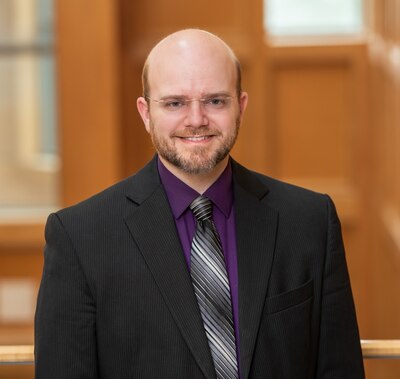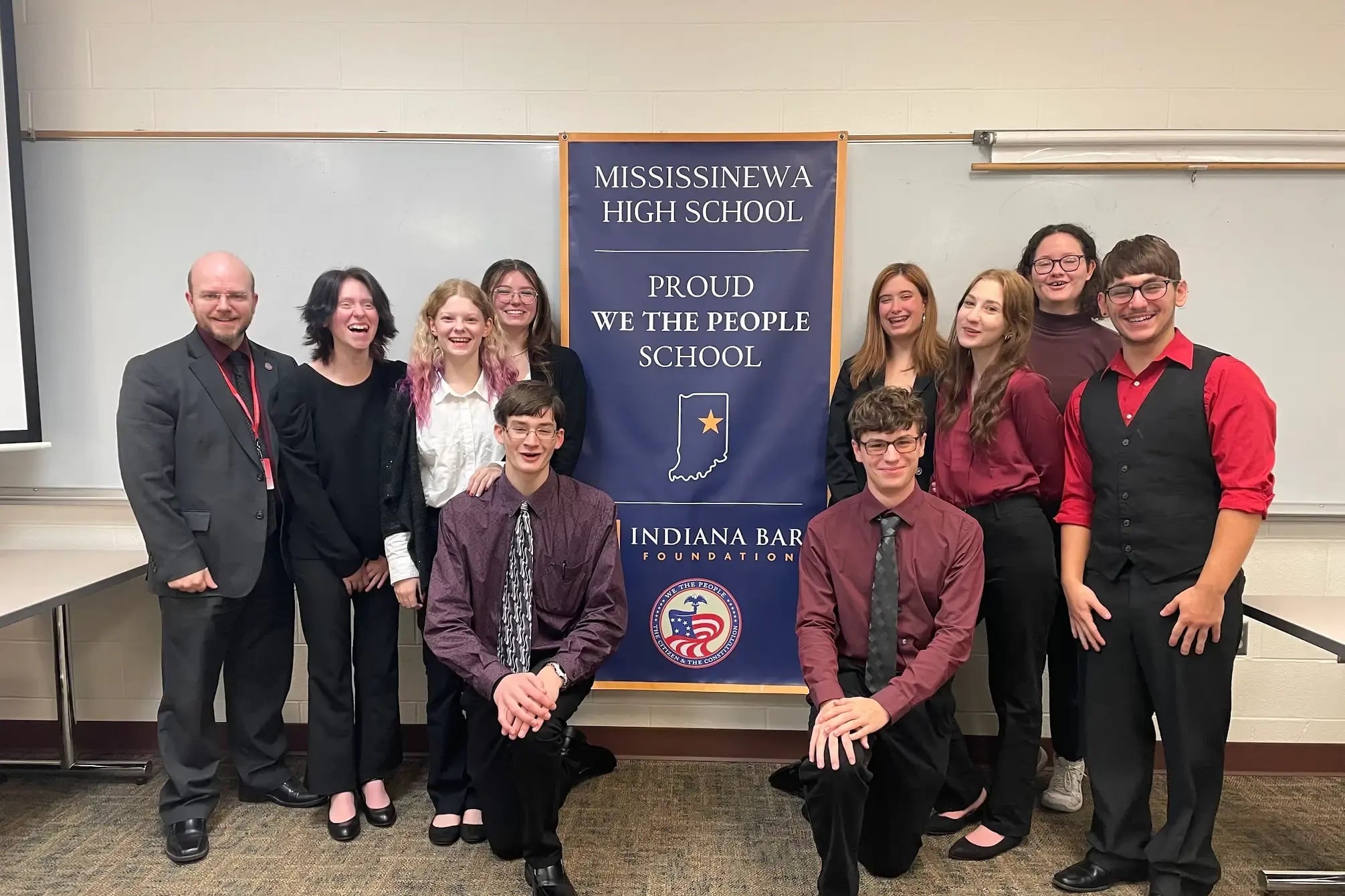Sign up for Chalkbeat Indiana’s free daily newsletter to keep up with Indianapolis Public Schools, Marion County’s township districts, and statewide education news.
In Adam Williamson’s social studies class, students learn American history “in the full light of day.”
That means everything the country has accomplished and its historical significance, along with its mistakes along the way, Williamson said.
As a 16-year veteran teacher and department chair at Mississinewa High School, a school around 70 miles northeast of Indianapolis, Williamson told Chalkbeat that the criticism that teachers face for teaching negative or divisive lessons about history is misdirected.
“Contrary to some prevailing opinions out there, teachers aren’t responsible for this attitude — we are often the first line of defense in trying to convince students that the United States is worth revering despite its past mistakes,” Williamson said. “I savor those moments when I can make a student stop to reflect and consider the perspectives of people who lived in the past and evaluate their decisions accordingly.”
And just as important as helping students understand the past is helping them grow into their roles as future adults, citizens, voters, and leaders. For this goal, Williamson said active learning is the key.
He leads students through mock legal proceedings, as well as simulated congressional hearings as part of the We the People curriculum and competition, and helps them understand how civics will affect their day-to-day lives.
“The fact that many of them are eager to begin adult life can provide leverage for engaging them in these sorts of participatory lessons,” he said. “I often say, “You’re going to be an adult in the eyes of the world soon, so you might want to know how this works.” That reality check tends to be effective for most students.”
This interview has been lightly edited for length and clarity.
How and when did you decide to become a social studies teacher?
I considered the career when I was in high school and then attempted a career in acting when I got to college. I quickly decided that there was too much drama in the drama department and reverted back to social studies education. Now, I have a difficult time thinking of something else that I would find more rewarding than teaching.
What’s a lesson that you like to teach that helps your students understand how civics is relevant to them?
I often teach civics using simulations. I particularly enjoy my mock trial and legislation simulations — I find that students begin to make direct connections to their own lives when they engage in those processes. Active learning pays dividends!

What are the biggest questions that your students have and have those changed over time?
In my history courses, I get a lot of questions about why the United States government has historically made a poor choice, or why the nation has made so many mistakes. The “information age” has presented us with new challenges regarding communication. Social media and internet video blogs have created echo chambers for criticism toward the United States government. Contrary to some prevailing opinions out there, teachers aren’t responsible for this attitude — we are often the first line of defense in trying to convince students that the United States is worth revering despite its past mistakes!
I see the teaching of United States history as an opportunity to invite my kids to confront American history in the full light of day, warts and all, and consider all that America has accomplished and all that it represents to humanity despite our missteps along the way. I savor those moments when I can make a student stop to reflect and consider the perspectives of people who lived in the past and evaluate their decisions accordingly.
What are some of the obstacles to engaging young people in voting and other civic duties? What helps?
Disengagement seems to be chronic, but that might be an illusion. It’s easy to focus on the cynicism toward government among Generation Z, but there are actually quite a few students who are engaged and/or want to be engaged in their communities.
Trying to make the rest of them understand that civic and political engagement is worthwhile isn’t an easy task. I find that running students through the processes of civic and political life demystifies things for them. Again, active learning is key. The fact that many of them are eager to begin adult life can provide leverage for engaging them in these sorts of participatory lessons. I often say, “You’re going to be an adult in the eyes of the world soon, so you might want to know how this works.” That reality check tends to be effective for most students.
Tell us about your work with We the People and the impact it has on your students.
We the People: The Citizen and the Constitution is, without a doubt, the most rewarding and effective curriculum I’ve ever used. I underwent training for the program at the annual summer institute as soon as I finished student teaching and soon after began teaching it at my first job in middle school.
The students thrived under the curriculum. It was so encouraging to see those young people diving into complex topics and engaging in dialogue about them with respected adults! Soon after, I was moved to our high school to pilot the program there and coordinate the program across the district. Since that time, we’ve had very successful We the People teams at all three levels and I’ve been able to enjoy watching students of all ages broaden their minds and consider their role in our body politic.
Nearly every student who has taken the We the People course with me has personally reflected on how thankful they were that they took part. That is very fulfilling for a teacher to hear. A few of those students have moved on to law school and public service, and I find it extremely satisfying to know that I played some part in those students’ journeys.
How do you approach news events or community happenings in your classroom?
I encourage students to stay in touch with current events by following their favorite news source, and I often invite students to ask questions about what’s going on in the country and in the world. There’s usually a connection to something we’re discussing in class, whether I’m teaching history or civics. Topical conversations pop up regularly as a result.
I also begin each semester by establishing norms for discussion and debate, and these often go a long way toward keeping the conversation civil and on-topic. When students make their own norms for discussion, they are not only invested in sticking to those norms, but they keep each other accountable to them.
Perhaps most importantly, I encourage students to be aware of the source of their information, particularly in regard to media bias and information reliability. We talk about how to determine trustworthy information sources and how to determine bias.
Tell us about your own experience with school and how it affects your work today.
I was a fairly conscientious student in high school. I cared about my grades, and I embraced the practicality of being a rule-follower. When I became a public school teacher I struggled to confront students who didn’t share those same values. It took some adjustment to understand the perspectives of students who intentionally deviated from school rules and norms and those who didn’t value academic success. I’m thankful for colleagues who helped me understand those perspectives and build rapport with those students.
In high school, I was very involved in the arts. Since I began teaching I’ve done everything I can to support those programs, from attending performances and donating to their funds to encouraging students to take that leap and express themselves through art, music, and dramatic performance.
What’s the best advice you’ve ever received, and how have you put it into practice?
Before you speak, ask yourself: “Does it need to be said? Does it need to be said now? Does it need to be said by me?” Asking myself those three questions has, on more than one occasion, helped me avoid more trouble than I bargained for.
What’s one thing you’ve read that has made you a better educator?
It’s a toss-up between “Teaching with Love and Logic” by Jim Fay and David Funk and “Help for Billy” by Heather Forbes.
Aleksandra Appleton covers Indiana education policy and writes about K-12 schools across the state. Contact her at aappleton@chalkbeat.org.







